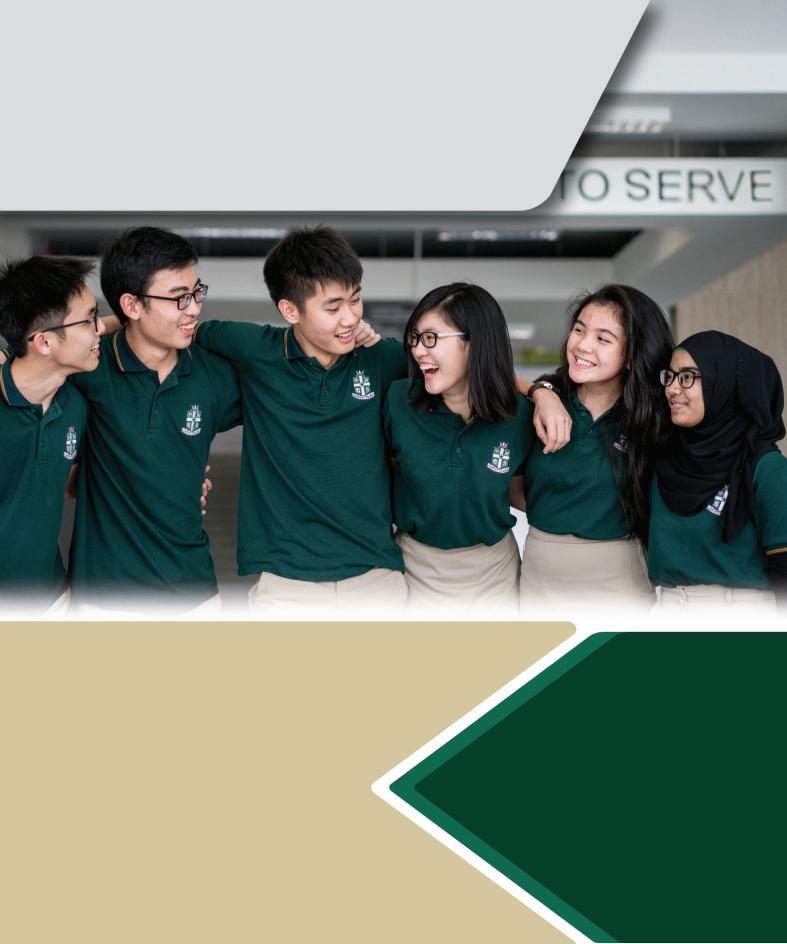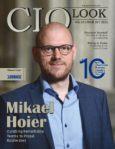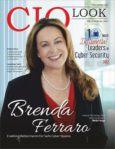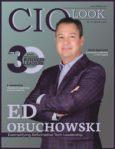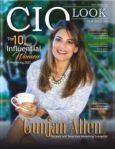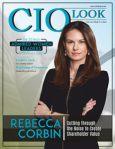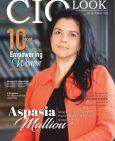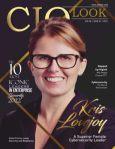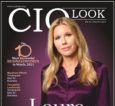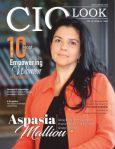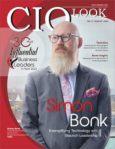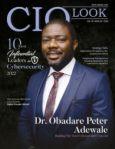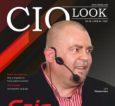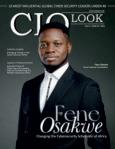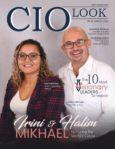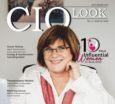Richard Charles Larson
The Visionary Voice of

Richard Charles Larson
The Visionary Voice of
The Lifelong Pursuit of Knowledge –
Journey in Research, Education, and Innovation
Channeling Setbacks Navigating Challenges with Modern Leadership Skills
Structuring Businesses The Art of Becoming a Transformative Leader
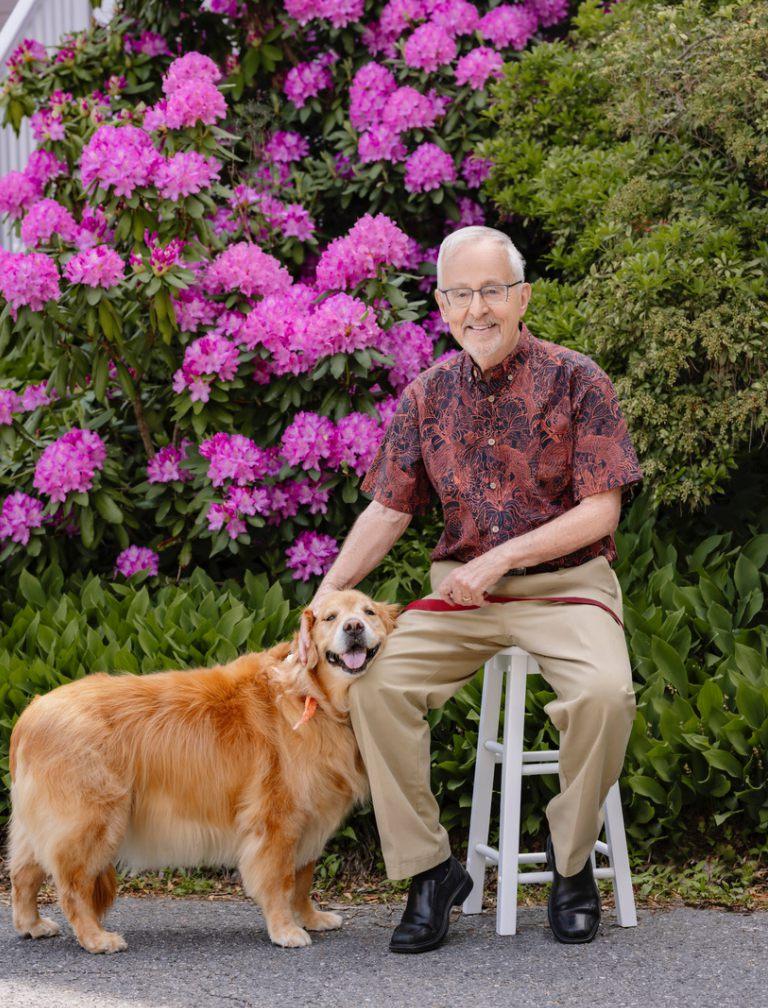

Showcasing Advisory Impact
Gaining Unmatched Exposure

Establishing as Industry Authority
Featuring on International platform



Visionaryeducatorsserveasarchitectsofknowledge and catalysts for societal progress They move beyond traditional teaching to cultivate curiosity, critical thinking, and a passion for lifelong learning in their students. By combining deep subject expertise with innovative methods, they transform classrooms into centers ofexplorationanddiscovery.Theirinfluenceextendsbeyond academic instruction, inspiring students to challenge conventions, pursue meaningful goals, and contribute positively to their communities Through mentorship, research, and thought leadership, such educators leave a lasting legacy, shaping not only individual lives but the broader landscape of education and innovation. One such visionary is Richard Larson, whose lifelong dedication to research,education,andinnovationexemplifiestheprofound impactaneducatorcanhave.
CIOLookinitsexclusivefeatureRichardCharlesLarsonThe Visionary Voice of Modern Leadership celebrates Richard Larson for his pioneering contributions to queueing theory, operations research, and decision science. His contributions have profoundly shaped both theoretical frameworks and practical applications, while inspiring successive generations of students. For Larson, education transcends the classroom, serving as a catalyst for societal transformation. A graduate of MIT, Larson demonstrated exceptional academic promise, earning a PhD in Operations ResearchandsecuringanappointmentasAssistantProfessor

at MIT Over the years, he rose to the rank of tenured professor, driven by intellectual curiosity and a deep commitmenttoteaching.Larsonhasconsistentlyprioritized mentorship,fosteringcriticalthinking,andguidingresearch that has led to groundbreaking innovations, including the Hypercube Queueing Model and the Queue Inference Engine.
Beyond academia, Larson has championed accessible education through initiatives like MIT BLOSSOMS and philanthropic contributions, including the endowed Larson Chair in Data, Systems, and Society His late wife, Mary Elizabeth Murray, was a steadfast partner in these efforts. Eveninretirement,LarsoncontinuestoadvocateMODELBased Thinking, emphasizing structured reasoning and informed decision-making for everyday life. His career reflectsarelentlesscommitmenttoknowledge,mentorship, and societal impact, demonstrating that learning is not merelyapursuitbutalifelongvocation.
Haveagreatreadahead!
C O N T E N T S
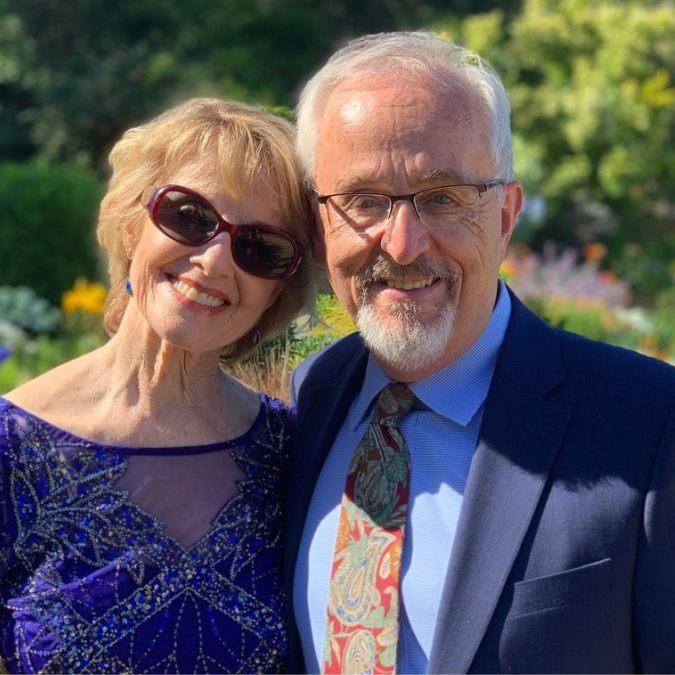
The Lifelong Pursuit of Knowledge
Journey in Research, Education, and Innovation
Channeling Setbacks
Naviga�ng Challenges with Modern Leadership Skills
Structuring Businesses
The Art of Becoming a Transforma�ve Leader
Editor-in-Chief
CONTENT
Deputy Editor Anish Miller
Managing Editor Prince Bolton
DESIGN
Visualizer Dave Bates
Art & Design Director Davis Mar�n
Associate Designer Jameson Carl
SALES
Senior Sales Manager Wilson T., Hunter D.
Customer Success Manager Collins J.
Sales Execu�ves Tim, Smith
TECHNICAL
Technical Head Peter Hayden
Technical Consultant Victor Collins
SME-SMO
Research Analyst Eric Smith
SEO Execu�ve Alen Spencer
FOLLOWUSON www facebook.com/ciolookmedia www.twi�er.com/ciolookmedia
CONTACTUSON
WE ARE ALSO AVAILABLE ON Email info@ciolookmedia com
For Subscrip�on www.ciolookmedia.com
Copyright © 2025 CIOLOOK , All rights reserved. The content and images used in this magazine should not be reproduced or transmi�ed in any form or by any means, electronic, mechanical, photocopying, recording or otherwise, without prior permission from CIOLOOK Media. Reprint rights remain solely with CIOLOOK Media.
sales@ciolook.com
September,2025


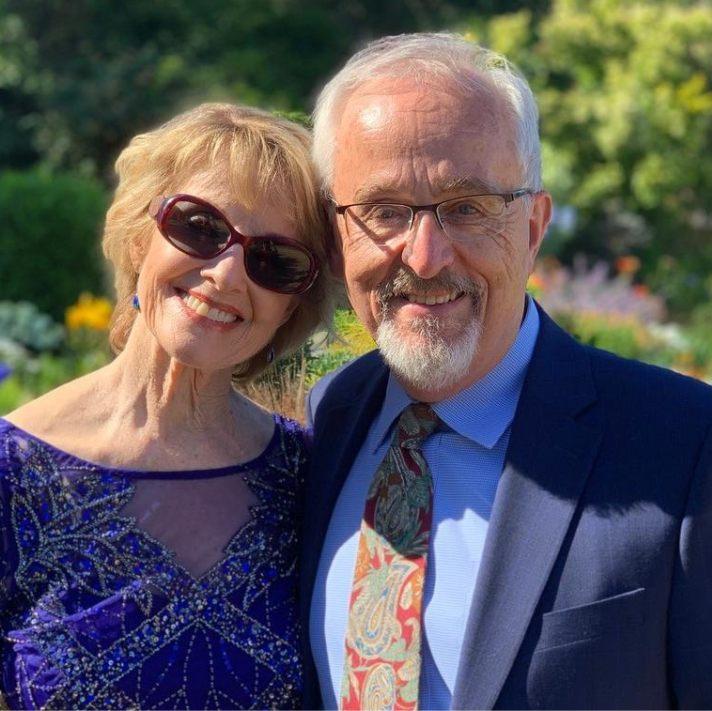

Teaching, for him, was never just about imparting informationit was about shaping minds, nurturing critical thinking, and fostering a sense of academic rigor and creativity. Seeing students develop into thought leaders and innovators brought him unparalleled fulfillment, reaffirming his belief in the transformative power of education.”
"The beautiful thing about learning is that no one can take it awayfromyou." B.B.King
Fewindividualsembodythespiritoflifelonglearning as profoundly as Richard Larson With a career spanning decade in research, academia, and innovation,hehascontinuallysoughttopushtheboundaries of knowledge while inspiring those around him to do the same. From pioneering breakthroughs in queueing theory and operations research to shaping modern approaches in educationanddecisionscience,hiscontributionshaveleftan indelible mark on both theoretical and applied disciplines. Morethanjustanacademic,hehasalwaysviewededucation as a powerful tool for transformation, one that extends beyonduniversityhallsandintoeverydaylife.
Beyondhisprofessionalachievements,Richard'sjourneyis alsoadeeplypersonalone.Hiscareerwasintertwinedwith the unwavering support of his late wife, Mary Elizabeth Murray("Liz"),whosepartnershipplayedanintegralrole in their shared mission of expanding access to quality education.Whetherpresentingatinternationalconferences, developinginnovativelearningmodels,ormentoringfuture researchers,Richardhasremainedcommittedtointellectual explorationandthebettermentofsociety.Eveninretirement, his passion for MODEL-Based Thinking and knowledge disseminationcontinuestodrivehisefforts,provingthatthe pursuitoflearningisnotjustaphasebutawayoflife.
Richard attributes much of his success to a fortunate beginningbeing admitted to MIT as a freshman at just 18 after graduating from Needham High School. His father initially hoped he would commute to save on costs, but Larson'sexperiencetookadifferentturnwhenhejoinedthe Phi Beta Epsilon (PBE) fraternity Unlike most MIT fraternities located across the Charles River, PBE was on Memorial Drive, right on campus, providing him with a close-knit community that became instrumental in his academic and personal growth. He fondly recalls the camaraderieandsupporthereceivedfromfellowmembers, whichmadehisMITjourneyallthemoreenriching.
His passion for learning deepened, leading him to pursue graduate studies and ultimately earn a PhD in Operations Research. As he approached the completion of his dissertation, his faculty advisor, ProfessorAlvin W. Drake, unexpectedly offered him an opportunity to stay on as an Assistant Professor Initially hesitant, Larson experienced
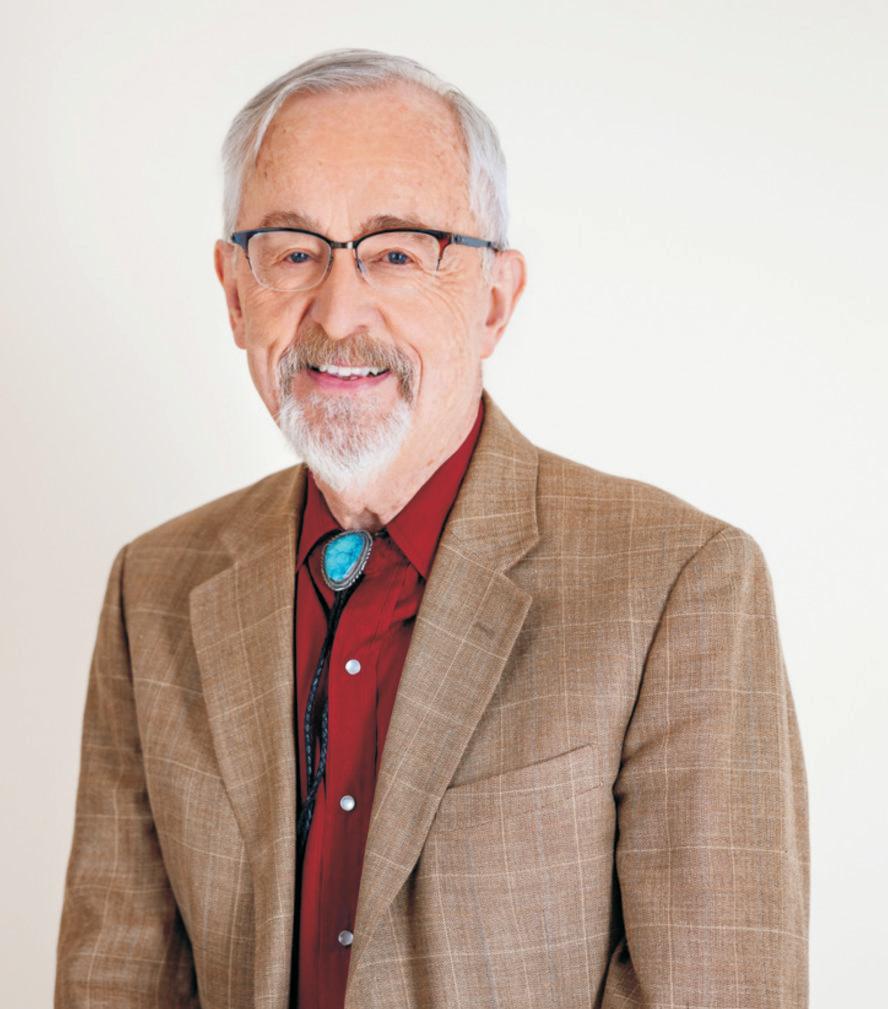

“
While lecturing was fulfilling, it was the deeper academic relationships formed through advising and supervising graduate students that I cherished the most. These close interactions fostered a culture of innovation and intellectual curiosity, often leading to groundbreaking research that was published in respected academic journals.”
what he calls the "Groucho Marx syndrome"doubting whether he belonged in a faculty role so soon after being a studenthimself.
However,heacceptedtheoffer,graduallyrisingthroughthe ranks to become a tenured professor. His decision to stay at MIT for the long term was driven by a deep intellectual curiosity and a love for the academic environment that had nurturedhim.
ForLarson,themostgratifyingaspectofhisacademiccareer was engaging with students, both in the classroom and throughresearchmentorship. "While lecturing was fulfilling, it was the deeper academic relationships formed through advising and supervising graduate students that I cherished the most. These close interactions fostered a culture of innovation and intellectual curiosity, often leading to groundbreaking research that was published in respected academicjournals."
He took immense pride in witnessing his students push the boundariesofknowledge,makemeaningfulcontributionsto
theirfields,andgoontoachieveremarkablesuccessintheir careers. "Teaching, for him, was never just about imparting informationit was about shaping minds, nurturing critical thinking, and fostering a sense of academic rigor and creativity Seeing students develop into thought leaders and innovators brought him unparalleled fulfillment, reaffirming his belief in the transformative power of education." Says Larson.
Although retired from active teaching and advising, Larson remainsdeeplycommittedtointellectualdiscourseandpublic engagement.Hisfocushasshiftedtowardsmakingcomplex ideas more accessible to a broader audience, a mission he pursuesthroughhisbook,MODELTHINKINGForEveryday Life. This work encapsulates his philosophy that effective decision-makingandproblem-solvingrelyonunderstanding conceptual and exemplary models. His goal is to equip individuals with the tools to think more critically, solve problems efficiently, and make informed decisions in everydaylife.
Larsonfirmlybelievesintheideathatcontinuouslearningis the foundation of a meaningful and fulfilling life. He often quotesEinstein'sphilosophy:"Adaywithoutlearningisaday wasted." For him, learning does not have to be confined to academic pursuitsit can be as simple as observing new behaviors in a pet or as profound as discovering a breakthrough in a research problem. He emphasizes that curiosity should be a lifelong habit, encouraging people to seekknowledgeinbothexpectedandunexpectedplaces.
Someofhismostintriguinglearningexperiencescameinthe form of insights gained through dreams. On two separate occasions,hefoundsolutionstocomplexresearchproblems in his sleeponce at around 3:00 AM, when he awoke to document his findings. One of these instances involved his Hypercube Queueing Model, which became a critical framework for optimizing urban emergency response services. These moments reinforced his belief that the mind continues to process and solve problems even when at rest. His commitment to intellectual exploration remains unwavering,evenafterdecadesofacademicachievement.
Larson'scontributionsextendwellbeyondtheclassroomand theMITcampus.Hehasbeenactivelyinvolvedinsupporting educational initiatives, including his past work with Notre
Dame Cristo Rey High School. He believes that education should not be limited to elite institutions but should be accessible to students from diverse backgrounds who aspire tocreateabetterfutureforthemselves.
"As part of his legacy at MIT, I decided to make a lasting contribution by funding an endowed Faculty Chair in Data, Systems, and Society, now recognized as the Larson Chair This endowment ensures that future generations of scholars andeducatorswillcontinuetopushthefrontiersofknowledge in these critical fields." His commitment to giving back reflectshisdeep-seatedbeliefineducationasatransformative force, capable of shaping not just individual lives but entire communitiesandindustries.
No successful career is without its challenges, and Larson's journey was no exception. One of the most humbling momentsofhisearlyacademiccareeroccurredwhenhewasa graduate student working as aTeachingAssistant. In a large lecturehall,astudentaskedforclarificationonanequationhe hadjustwrittenontheblackboard.Tohisdismay,herealized thathecouldnotadequatelyexplainitsomethingheattributes tohisownlackofdeepunderstandingofthematerialatthat moment.
From that day forward, he dedicated himself to meticulous preparationbeforeeverylecture,ensuringthathethoroughly understood his subject matter and could address any reasonablestudentquestionwithclarityandconfidence.This commitment to preparation not only made him a better educator but also instilled in him a lifelong discipline of intellectual rigor. His experience serves as a reminder that challenges, while sometimes uncomfortable, can be instrumentalinfosteringgrowthandexcellence.
Throughout his distinguished career, Richard Larson successfullybalancedhisprofessionalcommitmentswithhis personal life, embracing both with passion and dedication. Before his retirement, he held multiple rolesserving as a respected educator, a prolific researcher, and, most importantly, a devoted husband to his soulmate, Mary ElizabethMurray("Liz").Their43-yearjourneytogetherwas marked by unwavering support, intellectual collaboration, and a shared commitment to education. Their marriage was blessedwiththreewonderfulchildren,whohavenowbrought thejoyoffourgrandchildrenintothefamily

One of the most transformative trends in recent years, in his view, is the rapid advancement of Artificial Intelligence (AI). AI is reshaping education, research, and various industries in unprecedented ways. It presents both exciting opportunities and significant challenges, particularly in the realm of academia.”
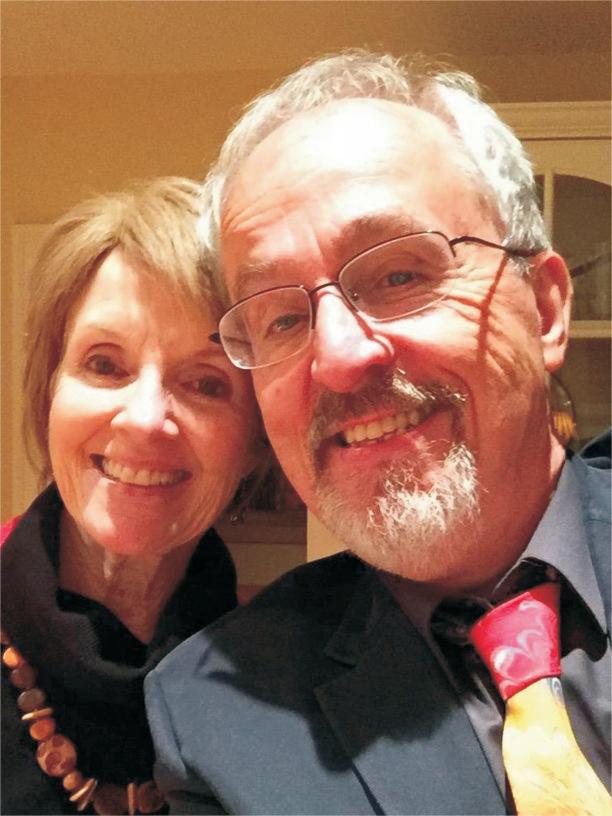
As part of his legacy at MIT, I decided to make a lasting contribution by funding an endowed Faculty Chair in Data, Systems, and Society, now recognized as the Larson Chair. This endowment ensures that future generations of scholars and educators will continue to push the frontiers of knowledge in these critical fields.” “
Lizplayedanintegralroleinhisprofessionallife,notonlyasa source of encouragement but also as an active participant in hisacademicendeavors.Shetookonaleadershippositionas the Manager of the MIT BLOSSOMS online education program, where she worked alongside him to expand access to quality learning resources worldwide. Together, they traveled extensively, presenting BLOSSOMS and other educationalinitiativestodiverseaudiences.Oneparticularly memorable moment was Liz confidently addressing a large audienceinSaudiArabia,sharingtheirvisionwithhundreds ofattendees.
Beyond his work at MIT, she also supported his consulting company, ENFORTH Corp., ensuring that his professional aspirations were met with her expertise and guidance. Her passing, nearly two years ago, left an immeasurable void in his life, and not a day goes by that he does not think of her. However, her legacy endures through their shared contributions to education, their impact on students, and the manylivestheyinfluencedtogether
Staying Ahead of Emerging Trends in Research and Teaching
Although now retired, Larson continues to observe the evolutionofeducationandresearchwithgreatinterest. "One of the most transformative trends in recent years, in his view, is the rapid advancement of Artificial Intelligence (AI). AI is reshaping education, research, and various industries in unprecedented ways. It presents both exciting opportunities and significant challenges, particularly in the realm of academia.”
One of his concerns is the growing use of AI-generated content in student learning. With students now able to complete assignments with minimal effort using AI tools, issues surrounding academic integrity and genuine intellectual engagement have become more pressing. He hopes that institutions and educators will address these complexitiesthoughtfully,ensuringthatAIservesasatoolfor enhancinglearningratherthandiminishingit.
Despitethechallenges,heremainsoptimisticaboutthefuture of education. He believes that critical thinking, analytical reasoning, and problem-solving skills will remain essential, regardless of technological advancements. While AI can processvastamountsofdata,itishumancuriosity,creativity, and ethical decision-making that will ultimately determine howitspotentialisharnessedforthegreatergood.
Larson'sadvicetoaspiringresearchersandeducatorsisboth simple and profound: "Follow Your Learning Passions! I have always encouraged my students to embrace intellectual curiosity and venture into uncharted territories." Hebelieves that the most impactful discoveries arise not from following conventionalpathsbutfromaninsatiabledesiretolearnand explorenewideas.
Throughout his career, he has seen firsthand how groundbreaking contributions emerge from a willingness to challenge traditional thinking. Two of his most significant researchbreakthroughs,theHypercubeQueueingModeland the Queue Inference Engine, stemmed from this very philosophy. The Hypercube Queueing Model became a foundationaltoolforoptimizingemergencyresponseservices in urban settings, while the Queue Inference Engine introduced innovative ways to analyze and predict service systems,influencingresearchinoperationsmanagementand decision science. These achievements were not planned in advance but were the result of his deep engagement with complexproblemsandarelentlesspursuitofknowledge.
Headvisesyoungresearcherstoapproachtheirworkwithan open mind, seek knowledge beyond textbooks, and actively engage with real-world challenges. He believes that true impact comes from exploring new frontiers and sharing discoveries with the broader academic and professional communities. By remaining adaptable, pushing intellectual boundaries, and maintaining a deep passion for learning, aspiring educators and researchers can shape the future in meaningfulways.
Although he is no longer conducting state-of-the-art research, Richard Larson remains deeply committed to promotingMODEL-BasedThinkingtoawideraudience.His recent focus has shifted from research to public education, helping individuals understand how conceptual models can enhancedecision-makingineverydaylife.
His book, MODEL THINKING For Everyday Life, is a testamenttothismission,offeringinsightsintohowdifferent models shape human understanding and improve decisionmaking. He firmly believes that structured thinking is a crucial skill for navigating the complexities of modern life, from business and policy-making to personal problemsolving.
In addition to writing, he has taken his message to public platforms, including television, radio, and speaking engagements, to reach a broader audience. A particularly memorablehighlightwasbeingfeaturedona20-storydigital billboard in Times Square, thanks to Marquis Who's Who. Theseexperiencesreaffirmhisbeliefthatknowledgeshould notremainconfinedtoacademiabutshouldbesharedwidely tomakeatangibleimpact.
While he may no longer be conducting new research, his mission remains unchanged: to educate, inspire, and equip peoplewiththeintellectualtoolstheyneedtothinkcritically andmakeinformeddecisions.ForRichardLarson,aslongas there are minds eager to learn, his work is never truly finished.




Withtherapidlychangingglobalworldof globalization,leadersareconfrontedwithan arrayofhigh-orderchallengesthatrequire vision,flexibility,andstrongpeopleskills.Classical leadershipstyles,effectiveinfairlystablecompanysettings, arebeingrewrittentomeetaworldoftechnologicalupsets, multiculturalteams,andshiftingeconomicagendas.The abilitytoleadthroughuncertaintyandinspireteamshas emergedasthecommondenominatorofgreatleadership. Today'sleadershipisnolongertechnicalcompetencyor command-and-controlmanagement.Rather,itisinstilling confidence,drivinginnovation,andfacilitatingadaptability withintheorganization.Leadersneedtobalance organizationalobjectivesandthehealthoftheworkers alongwithbeingattunedtotheneedsofsocietyingeneral. Successfulleadersarethosewhorealizethatleadershipisa dynamicprocessandnotstaticandthatitisaprocessof constantlearningaswellashavingthecapacityto empathizeandexperienceanemotionalconnectionwith individuals.
Therateofchangeisoneofthelargestproblemsthat leadershavetocopewiththesedays.Withglobalization, technologicaldisruption,andchangingcustomerdemand, organizationsmustpivotonadimeandrethinktheir strategies.Leaderswillberequiredtocreatestrategic agility,ortheleaders'capacitytolookaroundcorners,seize newpossibilities,andmakeeffectivedecisionsinthemidst ofuncertainty.Itmeanscreatinganexperimentalspirit, embracingfailure,andmovingfasttonewrealities.These aretheoneswhousuallymakedisruptionanopportunity, theonesthatestablishthebenchmarkforeveryoneelse. Strategicagilityalsoencompassesharmonizingshort-term needswithlong-termambitions.


Thetopleadershipmustkeepcashflowingandinvestfor thefutureandforinnovation.Forinstance,intimesof economicrecessionorglobalcrises,masterleaderswould holdontokeybusinessesbutatthesametimeinvestin frontiersordigitalalternatives.Individualsabletoconnect visionwithactionablestepsarelikelytocopebetterwith uncertaintieslikesupplychainshut-downorregulatory uncertainty Withthepromotionofopenness,cooperation, andtransparentcommunication,leaderscanbuildstrong companiesthatcanweatherturbulenceandsurviveboom timesbeyondcurrentdifficulties.
Emotionalintelligenceisincreasinglybeingcalleduponto bethekeytosuccessfulleadership.Technicalskilland performancecontinuetomatter,butthecapacityfor bonding,inspiring,andmotivatinghumanbeingsismost crucial.Emotionalintelligentleadersmanagestressmore efficiently,conflictmoresuccessfully,andmotivatetheir employees.Theyareempathetic,andthatbuildstrustand loyaltyamongstakeholdersandemployees.Withmore diversifiedworkplaces,emotionalintelligenceenables leaderstomanageculturaldifferences,generation differences,andcreateinclusivespaceswhereallfeelheard andvalued.Empathynotonlyimprovesrelationships betweenpeoplebutalsodecision-making.
Managerswhoarelikelytolistenintentlytotheir employeesaremoreabletoresolveproblemsearlierand comeupwithsolutionswithregardtotherealitiesoftheir employees.Forexample,organizationsthatimplemented flexibleworkarrangementsuponhearingfromtheir employeesdidamazinglywellatholdingontotalentin timesofuncertainty.Thisgeneratesasenseofshared responsibilityandownershipamongemployees,motivating themtobeinnovativeintheirfunctioning.Byrolemodelingemotionalintelligence,leaderssetorganizational culture,dictatingpsychologicalsafetyanddriving innovation.Organisationsaresubsequentlyabletoentice andkeeptop-qualitytalentmoreconvenientlywithinan internationalcompetitivelandscapeandsecureemployee wellbeingandengagement.
Wecurrentlyresideinaneraofinterdependenceand technologicaladvancement.Toremaincompetitive,leaders havetoaccessthepotentialofteamworkbothwithinand
outsideorganizations.Successfulleadersestablishnetworks geographicallyandhorizontallyacrossindustriesinan attempttoaccessdiverseperspectivesandknowledge. Collaborationgivesrisetoinnovation,speedsupproblemsolving,andcausessolutionsthatwouldnotbeaccessible individually.Cross-functionalteamworkandpartnerships undertheleadershipcreateaccesstonewgrowth potentialitiesandcreateatmospheresthatareoutside regularorganizations.
Fromcommunicationsoftwaretoanalysisofdataand artificialintelligence,technologygivesleadersvery sophisticatedtoolsformoreinformeddecision-makingand enablingefficiency Theuseoftechnologydoesmorethan expensemoneyinsystems,however.Leadersshouldmake surethattheemployeespossessthecapabilitytoleverage thetools.Leadersshouldfindabalancebetween technologicaluptakeandmoralssothatinnovationwillnot bekillingtrustorintegrity.Forexample,corporations whichadoptAItechnologywithethicsandtransparencyin howdataistreatedhavesuperiorstakeholderandcustomer relationships.
Leadershipinthecurrentageisadynamicpractice consistingofacombinationofstrategicthinking,emotional intelligence,andcompetencetoadoptcollaborationand technology.Leaderswhodevelopsuchabilitiesarenotonly goodathandlingadversitybutarealsocapabletobuild prosperous,enduringorganizations.Thefuturefor leadershipisbeingflexibleandbeingabletoconnectwith peopleonareallevelwhilebeingabletocapitalizeonthe potentialthatchangeholds.Thesearethekindofpeople whowillbeabletoleadtheirorganizationsthroughtimes ofdoubtandtofinalsuccess.Leadershipintoday'sworldis notthenachecklistofskillsbutanongoing,dynamic processrequiringcourage,humility,andaninsatiable pursuitofexpansion.


Leadership in the modern world has evolved beyond traditional hierarchies and authoritative structures. Today, organizations thrive under leaders who not only manage operations but also inspire transformation, innovation, and growth.Transformative leadership is the art

of fostering meaningful change while empowering individuals to exceed their potential. This approach emphasizesvision,empathy,andresilience,bridgingthegap between organizational objectives and human development. Atransformativeleaderdoesnotmerelydirectbutshapesthe culture and future trajectory of their teams. Becoming a transformativeleaderisbothanartandadiscipline.Itrequires adeepunderstandingofhumanbehavior,strategicforesight, and the ability to adapt to rapidly changing environments. Unlike transactional leadership, which focuses on rewards and punishments, transformative leadership encourages intrinsic motivation, critical thinking, and creative problemsolving. Leaders who master this approach can cultivate environments where innovation flourishes and employees feel valued and engaged The impact of transformative leadership extends beyond organizational success, influencing communities and industries by setting new standardsofexcellenceandethicalresponsibility.
At the heart of transformative leadership lies a compelling vision.Aleaderwithaclearsenseofpurposeinspiresothersto aligntheireffortstowardsharedgoals.Thisvisionisnotstatic butevolvesinresponsetomarkettrends,societalshifts,and organizational growth. Communicating a coherent and inspiringvisionrequiresclarity,conviction,andconsistency Leadersmustarticulatehowindividualcontributionsconnect to the broader mission, ensuring that employees understand theirrolesincreatingmeaningfuloutcomes.Byestablishinga senseofdirection,transformativeleaderscreateaframework forinnovation,collaboration,andsustainedperformance.
Purpose-drivenleadershipalsoinvolvescultivatingaculture of trust and accountability Employees are more likely to embracechangeandtakecalculatedriskswhentheybelieve in the leader's integrity and the organization's mission Leaderswhodemonstrateauthenticityandaligntheiractions with stated values encourage similar behavior across the organization. This alignment between vision and practice reinforcescommitmentandresilience,particularlyintimesof uncertainty. Organizations led by purpose-driven transformative leaders consistently outperform competitors and maintain higher levels of employee engagement, demonstrating the tangible benefits of vision-centered leadership.
Empathy is a defining characteristic of transformative leaders Understanding and valuing diverse perspectives allows leaders to address employee needs, resolve conflicts effectively, and build cohesive teams. By listening actively and responding thoughtfully, leaders create environments where individuals feel respected and empowered. This approachnotonlystrengthensrelationshipsbutalsoenhances organizational performance by leveraging the full spectrum of employee talents. Transformative leaders recognize that emotional intelligence is as critical as technical expertise in drivinglong-termsuccess.
Collaboration is equally essential in cultivating a transformative organizational culture. Leaders who encourage teamwork, knowledge sharing, and crossfunctional initiatives facilitate innovation and problemsolving By breaking down silos and promoting open communication, they ensure that ideas flow freely and that employees feel invested in outcomes Collaborative leadershipalsofostersasenseofownership,asteammembers recognizethattheircontributionshaveameaningfulimpact. This combination of empathy and collaboration transforms workplacesintohubsofcreativity,adaptability,andsustained growth, enabling organizations to navigate complexity with agilityandconfidence.
Atransformativeleaderiscommittedtocontinuouslearning andpersonalgrowth,bothforthemselvesandfortheirteams. Encouragingprofessionaldevelopment,mentoring,andskillbuilding initiatives allows employees to expand their capabilitiesandtakeonnewchallenges.Leaderswhomodela growth mindset inspire similar behavior in their teams, creatingaculturewhereinnovationandexperimentationare valuedovercomplacency Thisfocusongrowthensuresthat organizationsremaincompetitiveandthatemployeesremain motivated,adaptable,andfuture-ready.
Resilience is another critical component of transformative leadership Leaders who demonstrate composure, adaptability,andproblem-solvingunderpressuresetthetone forhowteamsrespondtochallenges.Theyviewobstaclesas opportunities for learning rather than setbacks, fostering a culturethatembraceschangeand persists through adversity. By balancing optimism with realism, transformative leaders equiptheirorganizationstonavigateuncertaintyandsustain
long-term success. Ultimately, the combination of growth orientationandresilienceensuresthatbothleadersandtheir teams are prepared to thrive in dynamic and demanding environments.
multidimensional approach that extends far beyond traditional management practices. It requires a clear vision, empathetic engagement, collaborative spirit, and an unwavering commitment to growth and resilience. Leaders whocultivatethesequalitiesinspirenotonlyorganizational successbutalsolastingimpactonindividuals,communities, and industries. In a world marked by rapid change and uncertainty,masteringtheartoftransformativeleadershipis notmerelyanadvantagebutanecessityforthosewhoaspire to shape the future. By embracing the principles of vision, empathy, collaboration, growth, and resilience, leaders can drive innovation, foster engagement, and create sustainable value. Transformative leadership is ultimately about humanizing the workplace, unlocking potential, and inspiring a shared purpose that elevates both people and organizations.

